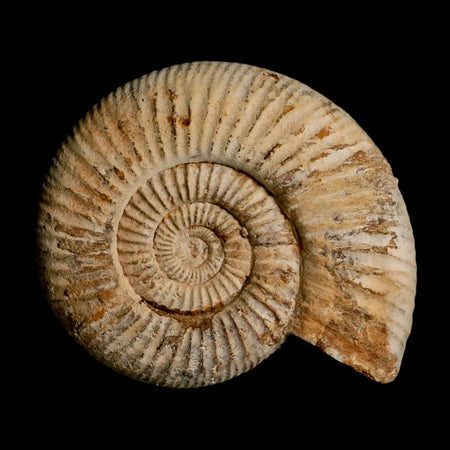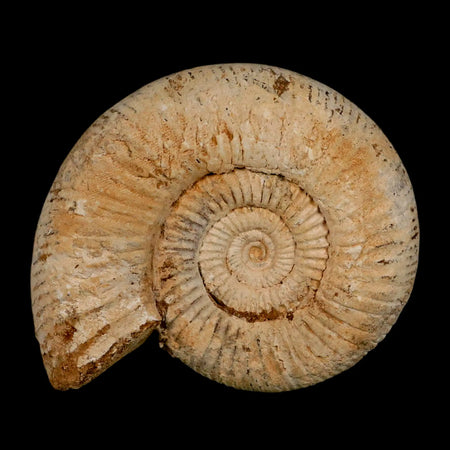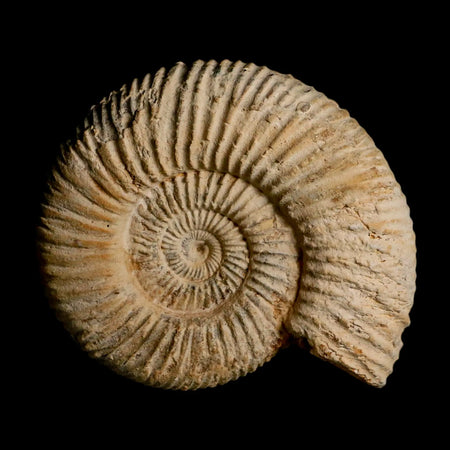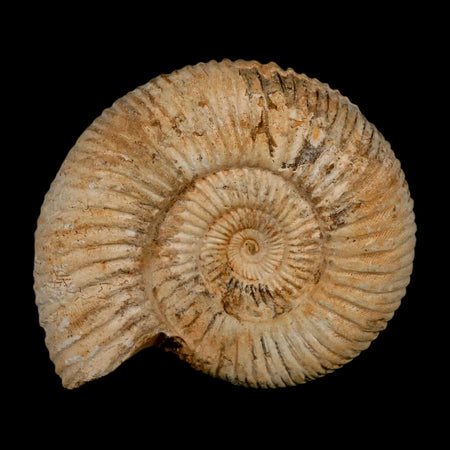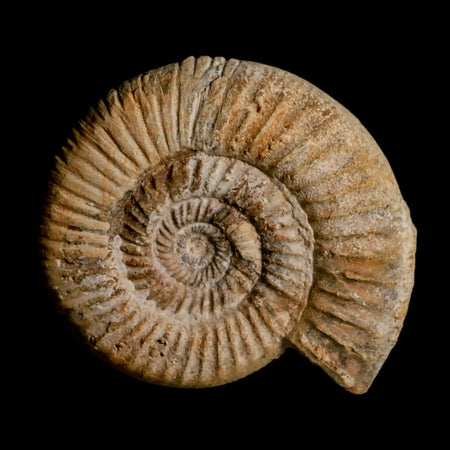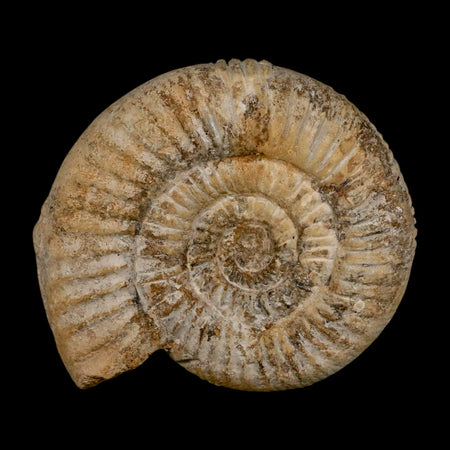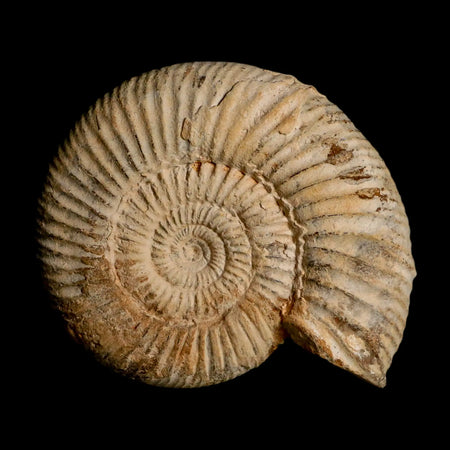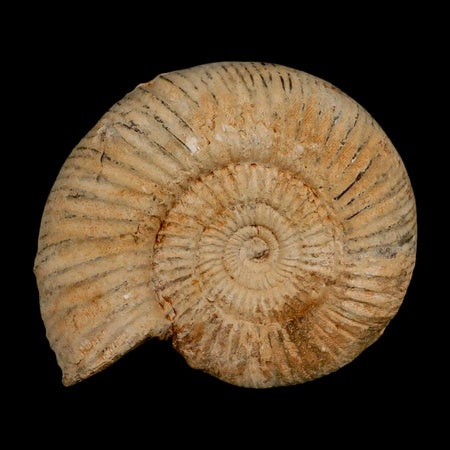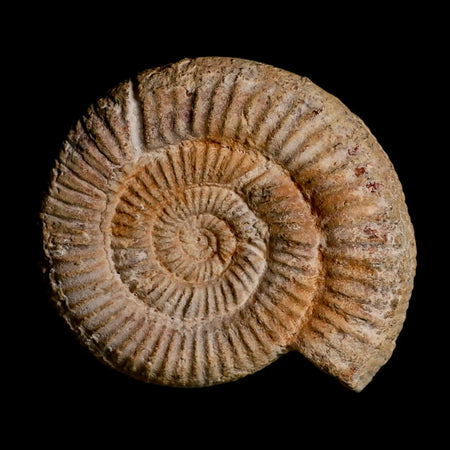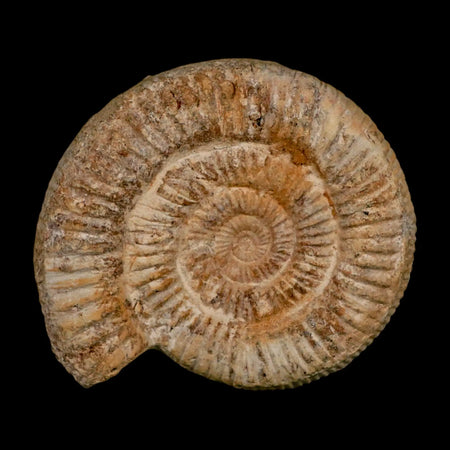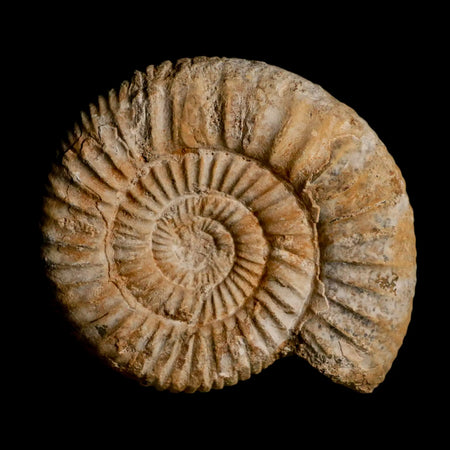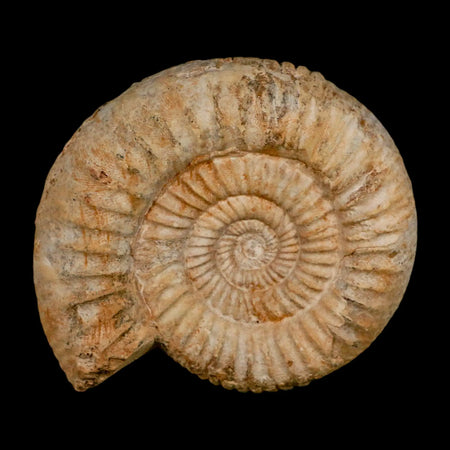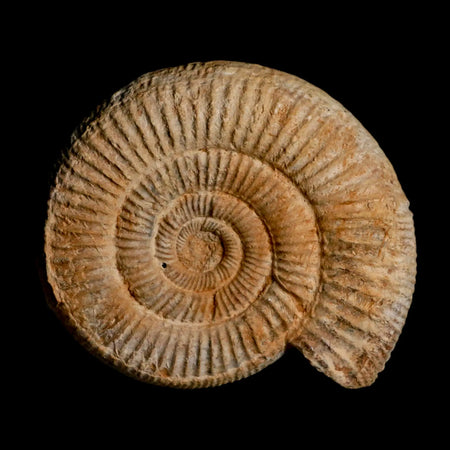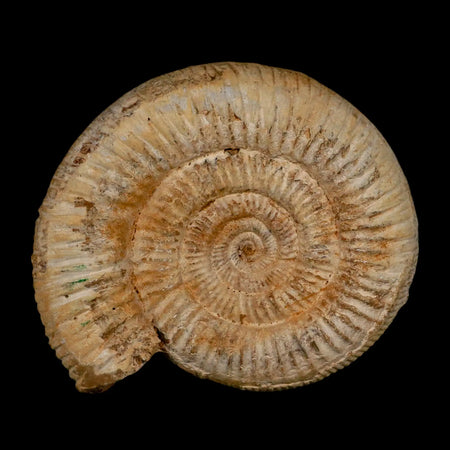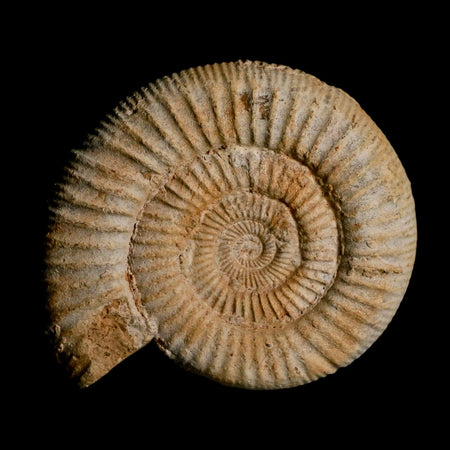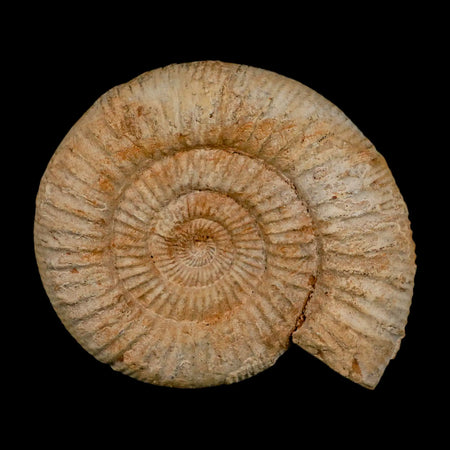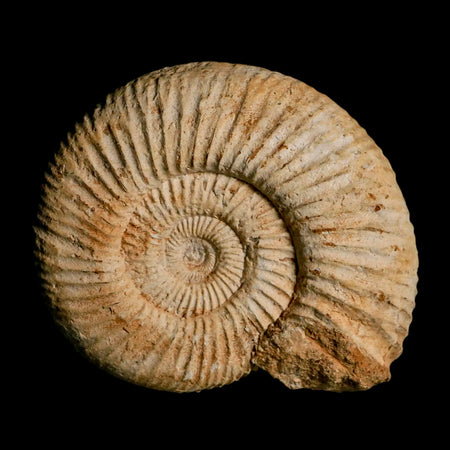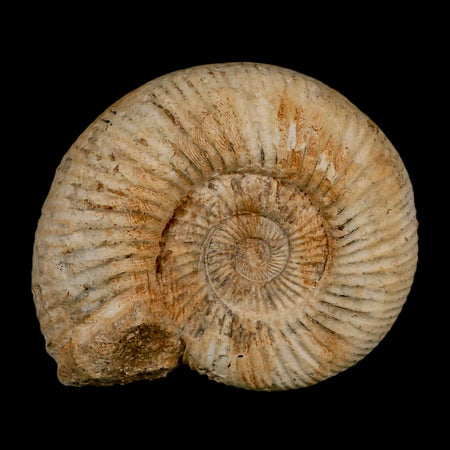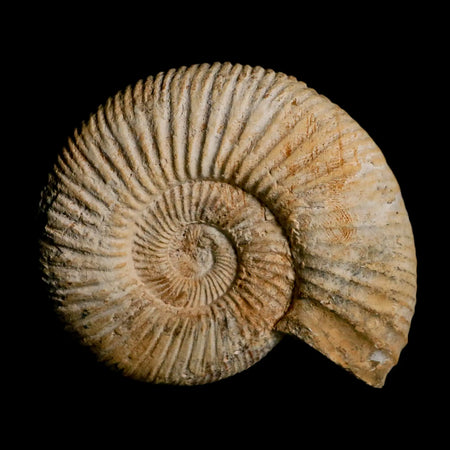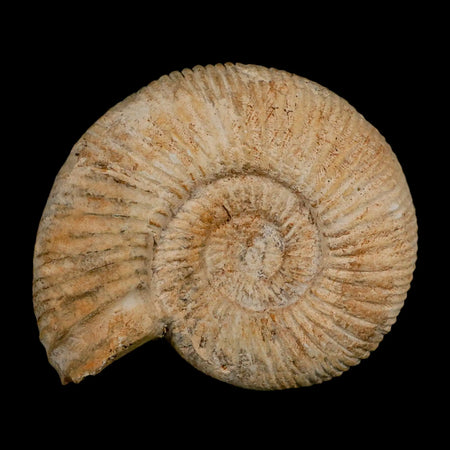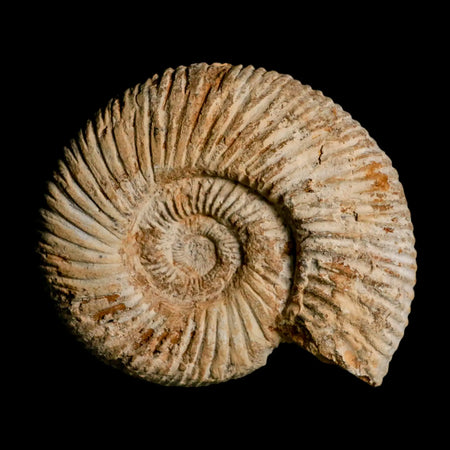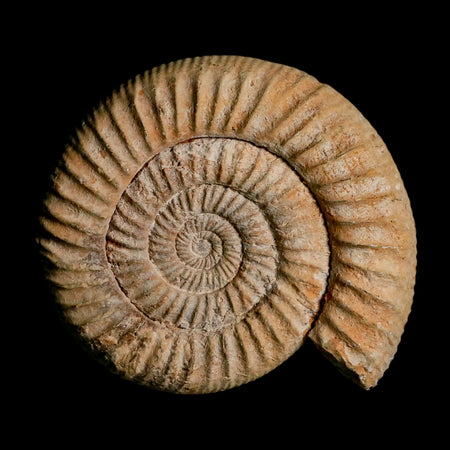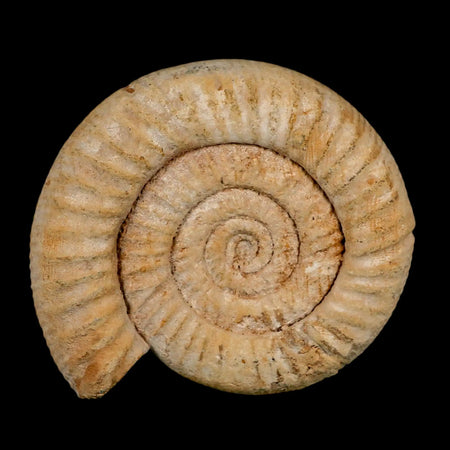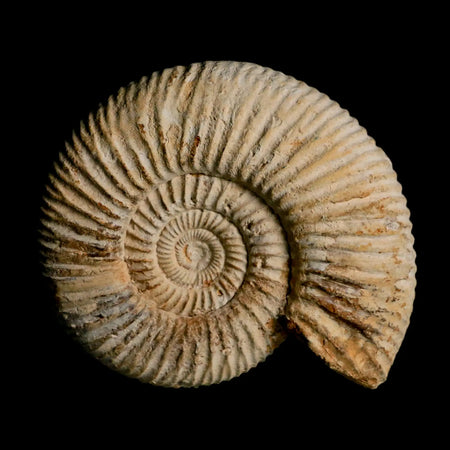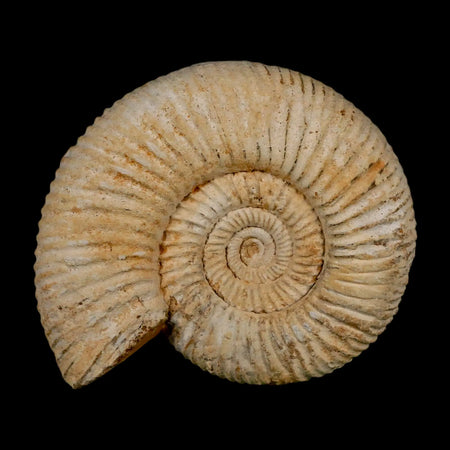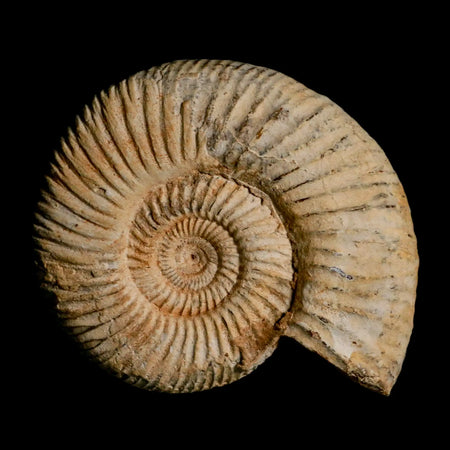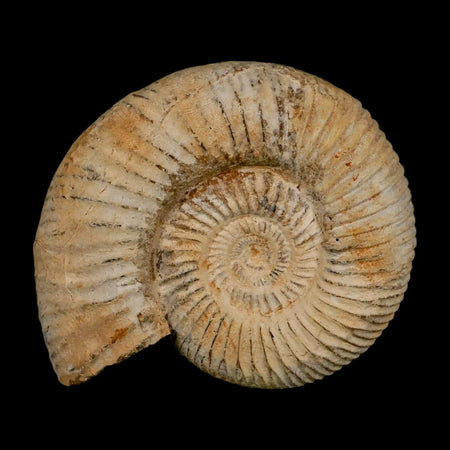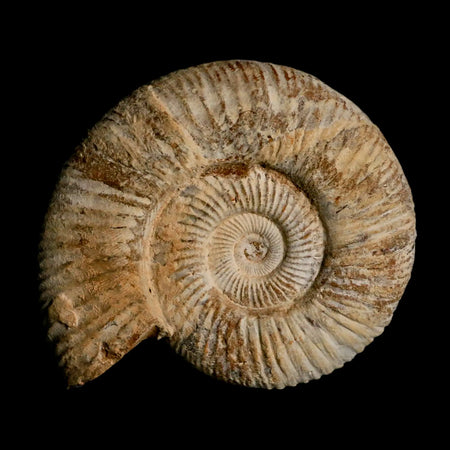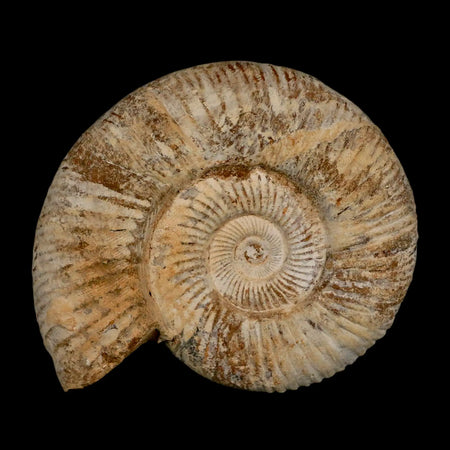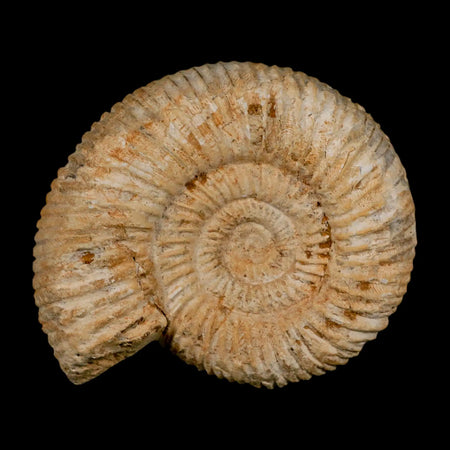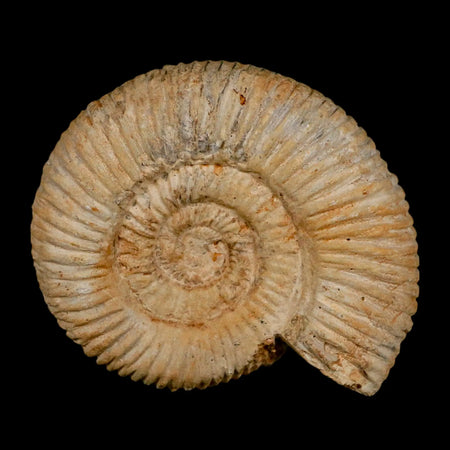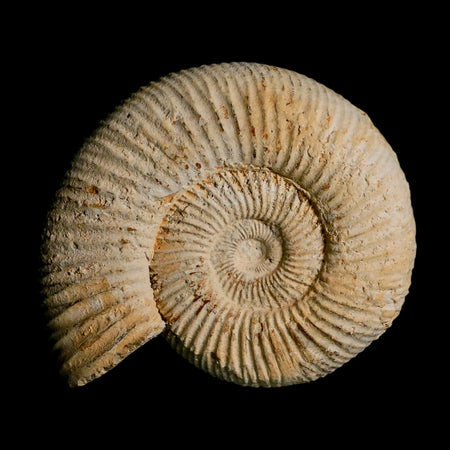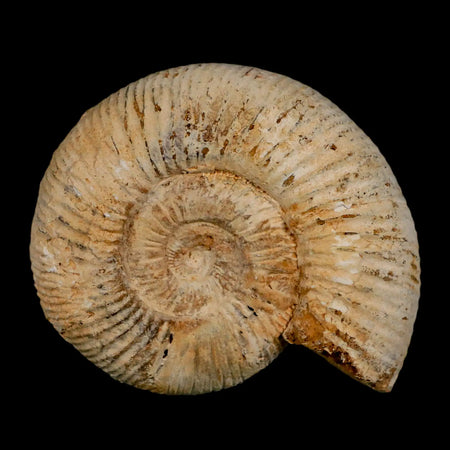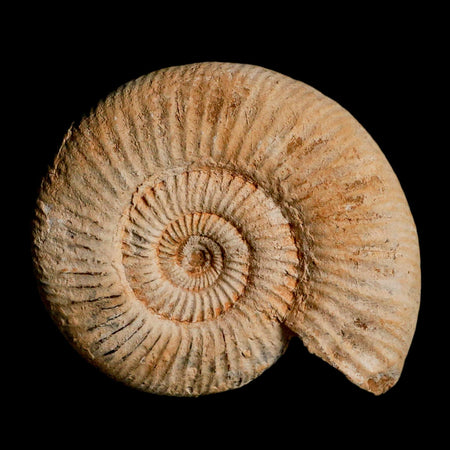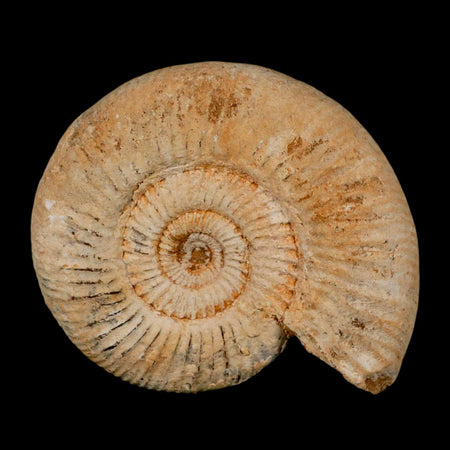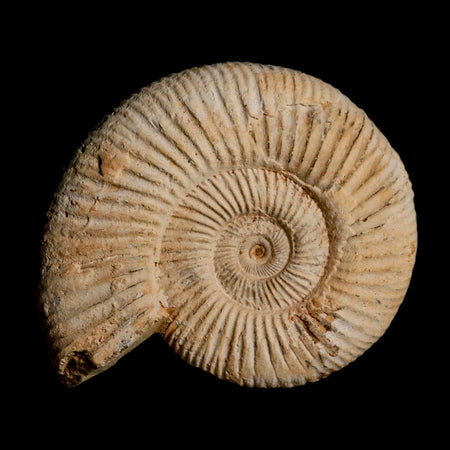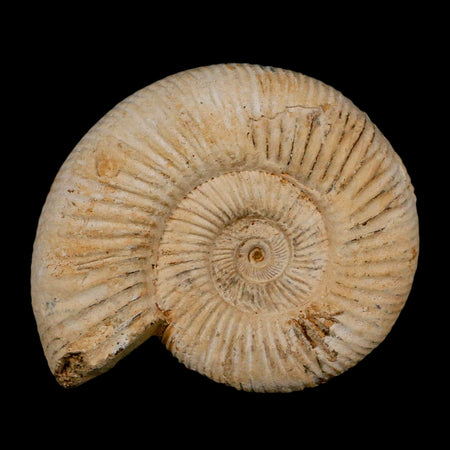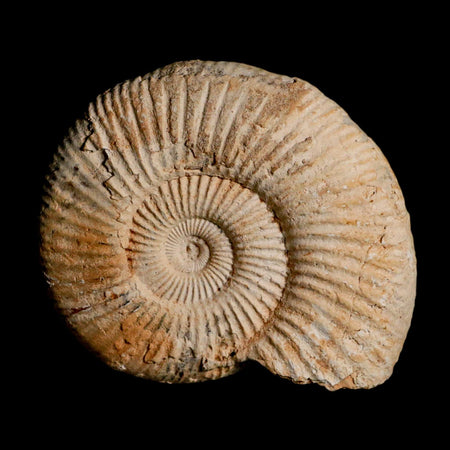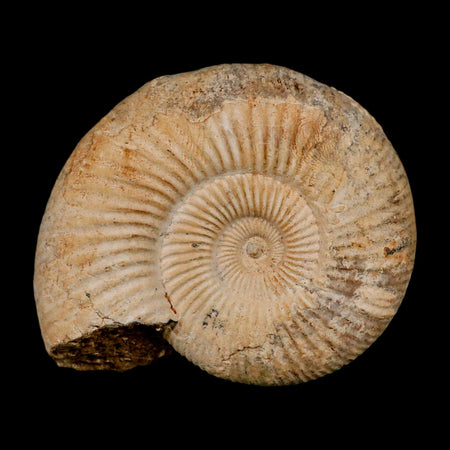Ammonite Fossil Collection
Ammonites are an extinct group of marine animals related to present-day squid, octopus, and cuttlefish. They belong to the class Cephalopoda in the subclass Ammonoidea. The last ammonites became extinct during the Cretaceous-Paleogene extinction event. There are several dominant shapes found in ammonites, including spirals and non-spiralled forms called Heteromorphs. Helically spiraled Ammonites have the same kind of symmetry you would see in a spring or slinky. Ammonites get their name from the Greek god Ammon, who had ram’s horns, like the spiraled ammonites.
Metaphysical properties of fossils are provided for informational purposes only, and no life-altering results are guaranteed. Ammonites are said to increase stamina, vitality, and success. Removing negative energy and activating life path energies, ammonite's spirals represent continual change and evolution. Holding ancient life force energy, they may be useful in enhancing Kundalini energy.
What Are Ammonite Fossils?
Ammonite fossils refer to remains of marine mollusks that thrived in seas worldwide. They belong to the subclass Ammonoidea and are relatives of present-day squids and octopuses. They appeared 400 million years ago and went extinct approximately 66 million years ago in the mass extinction that wiped out the dinosaurs. Their elegantly coiled shells are among the most iconic general fossils.
Where Were Ammonites Found and How Did They Live?
Ammonites lived in ancient seas that covered what are now continents. Fossils of these creatures have been discovered from Canada to Madagascar, Morocco to Germany, and certain parts of the U.S., such as Utah and Montana.
Ammonites would float around free or move close to the ocean surface by jet propulsion- the same way an octopus does today. Their chambered shells would keep them at the right level of buoyancy while giving protection from predators.
Ammonites fed on smaller marine animals and captured them with their tentacles. They were, therefore, an active link in the marine food web and were prey to marine reptiles such as mosasaurs.
Why Did Ammonites Survive So Long And Then Suddenly Vanish?
Ammonites were evolutionary super survivors, having outlived several extinction events. Many mysteries remain as to their last disappearance some 65 million years ago. From fossils, we gather that ammonites started their decline long before the meteor that marked the end of the Cretaceous period.
Changes in ocean currents, volcanic activity, and ecosystem disruption might have been enough to have already put them under pressure. The meteorite was the final hammer blow as its impact rapidly altered global temperatures and ocean chemistry. This extinction signifies one of Earth's most dramatic biological turnovers.
Can Ammonites Reveal Earth's Magnetic Field History?
Ammonite rocks are often used by magnetostratigraphy techniques for reading the ancient magnetic alignment of minerals in sediments. Because ammonites evolved rapidly and are found worldwide, they make perfect biostratigraphic markers. When these fossils are matched with magnetic signatures in the rock, they help reconstruct shifts in Earth's geomagnetic field over millions of years, thus providing clues on planetary core dynamics and tectonic drift.
Is It True Ammonites Could Change Shell Shape to Survive?
Most people think of the classic spiral shell form, but few know that ammonites could alter the shape of their shells when faced with environmental pressures. Going through ecological stress periods, they developed uncoiled or irregular shells called heteromorph ammonites.
The variations in shell shape could have acted in their interest by either reducing competition or allowing ammonites to explore new ecological niches, which speaks to their evolutionary adaptability. Some heteromorphs resembled paperclips.
Did Ammonites Influence the Design of Modern Submarines?
Indirectly yes! The internal chamber system of ammonite shells inspired early submarine engineers. By gas exchange, these chambers controlled buoyancy, as did the submarines conceived by man. Ammonites thus were, in a way, nature's first submariners, and their design helped guide human concepts of undersea travel.
Why Do Some Ammonites Turn Into Gemstones?
If geological conditions are just right, the shells of some ammonites get fossilized into gemstones like ammolite, a brightly shimmery mineral found almost entirely in Alberta, Canada. This transformation occurs when aragonite, the material of the shell, is preserved and mineralized over millions of years. The end product is a rainbow-hued fossil so brilliant that it's set into jewelry.
What Can You Find in Our Ammonite Fossils Selection?
From stunning polished ammonites with complex patterns to raw specimens straight from the Earth, our collection affords a selection for each individual. Each of them tells a different story, frozen in time. These fossils link you back to the past.


